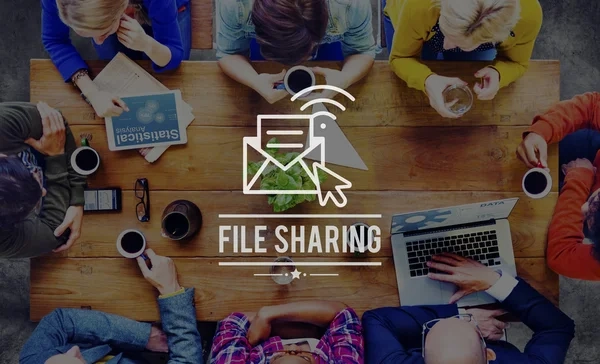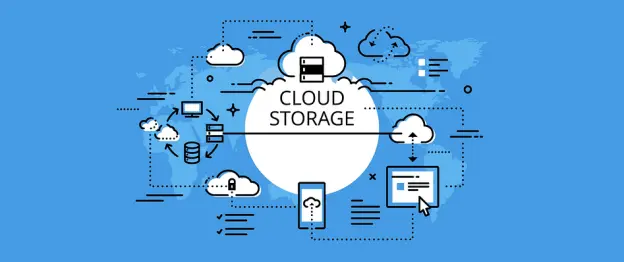File Sharing Solutions: Unveiling Advanced Methods Beyond “Files Over Miles”

In modern times, where the world is interconnected digitally, a need for more efficient file sharing solutions has become necessary. As businesses around the world continue to expand, and remote work becomes more prevalent, conventional file sharing methods like emailing or physical storage devices are proving to become inefficient. Along with technological advancements, various forms of file sharing methods have also come forward other than “Files Over Miles”, and in this article, we will be going over these solutions along with how efficient they are, and how well they can cater to the needs of modern society.
The Limitations of Traditional File Sharing Methods
Before we go into the advanced file sharing ways, it’s important to know what limits the older file sharing methods. Although emailing is quite convenient when it comes to sharing files of smaller sizes, but the problem arises with large files, as email servers usually have limits on the file size that can be attached, which can cause broken communication as well as longer times to deliver the message. In this same way, physical storage devices (like USB drives or external hard disks) prove to be inconvenient, especially when in collaboration with other participants.
Beyond “Files Over Miles”: Exploring Advanced Solutions

1. Cloud Storage and File Hosting Services
Many file hosting services are available like Google Drive, Dropbox, and OneDrive, which have completely changed the world of file sharing, as users can access these centralised storage services from anywhere as long as an internet connection is available. Users can install, upload or collaborate on files, making this form of file sharing ideal for remote collaboration, as it gets rid of the entire necessity of needing to email large attachments.
According to Statista, the global cloud storage market’s value was at 90.17 billion U.S dollars in 2022, and was estimated to rise to 108.69 billion U.S dollars by 2023, and 472.47 billion U.S dollars by 2030, with an annual rate of growth of 23 percent.
2. Collaboration Platforms and Project Management Tools
There are also some services that allow the combination of communication into one interface like Slack, Microsoft Teams and Trello. These sort of platforms have integrated productivity tools where the users are able to create channels, upload files, track real time progress and discuss tasks, which helps in narrowing the flow of work, ameliorating team productivity.
A research by McKinsey & Company showed that workers involved in social technologies for work have an increased productivity of knowledge, the increase is estimated to be around 20-25%.
3. Peer-to-Peer (P2P) File Sharing
Peer-to-peer file sharing enables users to share files across devices without the need of a central server. This form of file sharing even ensures privacy and reliability as it has advanced to secure file sharing for business purposes, and is even usually associated to sharing files of larger sizes. P2P platforms knclude Resilio Sync and Syncthing which can encrypt data before sharing to ensure privacy and protection.
Advantages of Advanced File Sharing Solutions

1. More Reliable Secuirty
The modern advanced file sharing methods prioritise security and encryption, through giving access to controls and audit trails to safe-keep any personal data. While traditional file sharing solutions were more susceptible to data loss or interception.
2. Ameliorated Collaboration
Advanced file sharing solutions also make team productivity and cohesion better, by permitting users to collaborate in real-time, making communication more efficient. Be it in a different time zone, users can connect and collaborate without any effort, and stay up to date on progression of projects.
3. Scalability and Flexibility
Cloud-based collaboration platforms are scalable, that is, they permit businesses to vary their storage and user capacity in accordance with their needs, these solutions also are able to integrate with other softwares, increasing the range if tools available and the capabilities of the platform.
The Evolution of File Sharing: Adapting to Changing Needs
1. Blockchain-based File Sharing
Blockchain file sharing has lead to a new peak in the world of file sharing, as it is a decentralised and can not be intercepted. Users use applications like Filecoin and Storj, which use this solution to provide a secure file storage system which is not dependent on a centralised system. Thus greatly improves the storage system’s defence again cyber attacks.
According to Reportlinker, the blockchain market was approximately valued ag USD 3.0 billion in 2020, and is expected to grow to USD 39.7 billion by 2025.
2. Secure Fole Transfer Protocols
Secure file transfer protocols like SFTP )SSH File Transfer Protocol) and FTPS (FTP over SSL/TLS) provide users with encrypted channels to share files over a network, which provide stronger security in comparison to the conventional FTP (File Transfer Protocol), safeguarding data from any third party interference or cyberattacks.
A study by Ponemon Institute, LLC (2014) on the topic of data breaches discovered that a stronger security protocol used by organisations helped to lessen data breaches by $14 per record.
Addressing Common Concerns: Security and Compliance
1. Data Encryption and Privacy
Advanced solutions encrypt data while both in the state of being uploaded and in its state of rest, this makes sure that only users that have been granted access are permitted to access the sensitive information. In addition, access controls and multi-factor authentication provide further protection.
2. Regulatory Compliance
Regulations like the GDPR and HIPAA are better facilitated to be complied to in advanced file sharing solutions, this ensures that the files that are being shared fall under the regulatory standards.
The Future of File Sharing
With further advancements in modern technology, more and more ways of file encryption and sharing are being produced which revolutionise the file sharing world by providing faster speeds, better security, and more reliability.
1. Edge Computing
Edge computing closes the gap between the processing power and the source of the data to allow real-tome share and collaboration of data, whilst experiencing a reduction in latency. By the use of this infrastructure, file sharing applications can be immensely improved.
2. Quantum Encryption
Utilising quantum mechanics, quantum encryption allows for unbreakable encryption keys to be made which provides security and encryption of the highest grade. Despite being in the production stage, this form of encryption and file sharing has the ability to completely revolutionise cybersecurity.
Conclusion
Advanced file sharing solutions are a necessity for modern organisations, as with the emergence of the digital age, the use of traditional data storage and sharing methods can only slow progress, all the while being riskier in regards to vulnerability in losing data. Whether you’re a small startup or a multinational corporation, investing in file sharing is vital in sustaining competitiveness and gain new opportunities in this digital age.

Similar Posts
Is Aiyifan TV Revolutionizing Entertainment Through Cultural Connectivity?
Stellar Data Recovery Professional for Windows: The Ultimate Professional Data Recovery Software
How Can MyFlexBot Revolutionize Your Workplace Efficiency?